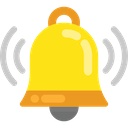RJS
Jedi Warrior
Offline
Hi,
I have a pretty arcane question about the initial set-up for the TR4A slave cylinder which is self adjusting. I've read the Bentley Manual, Triumph Technical Service Bulletin T-66-55 (which says to use 0.3" freeplay, not 0.1") and the Moss Bulletin 596-046 on setting up the TR250 & TR6 adjustable pushrod ( https://www.mossmotors.com/graphics/products/PDF/596-046.pdf ). Each one is not entirely clear. My main question is if the slave piston is to be seated all the way home (in the back of the slave cylinder) when performing the adjustment for freeplay?
I took a shot a drafting my own step by step instructions. Let me know if you think this is correct and more clear:
I want to get this right since the Moss Bulletin contains a warning in bold red letters "Warning! If you totally eliminate the freeplay in the clutch linkage you run the risk of pre-loading the release bearing, which means it is rubbing against the fingers of the pressure plate. This will cause the release bearing to fail at best, and wear out the rear thrust washer in the engine at worst."
Thanks for those who are patient enough to read through this
Bob
I have a pretty arcane question about the initial set-up for the TR4A slave cylinder which is self adjusting. I've read the Bentley Manual, Triumph Technical Service Bulletin T-66-55 (which says to use 0.3" freeplay, not 0.1") and the Moss Bulletin 596-046 on setting up the TR250 & TR6 adjustable pushrod ( https://www.mossmotors.com/graphics/products/PDF/596-046.pdf ). Each one is not entirely clear. My main question is if the slave piston is to be seated all the way home (in the back of the slave cylinder) when performing the adjustment for freeplay?
I took a shot a drafting my own step by step instructions. Let me know if you think this is correct and more clear:
- Remove rubber cover from slave cylinder to ease adjustment of pushrod – slide it up pushrod out of the way
- Remove clevis pin, disconnecting clevis fork from clutch actuating lever
- Seat slave cylinder piston all the way home with pushrod (i.e piston bottomed all the way in the slave cylinder). Careful fluid does not overflow master cylinder
- With clutch actuating lever in its natural rest position, rotate clevis fork on pushrod so the hole on clevis fork lines-up with middle hole of the actuating lever.
- Insert clevis pin connecting clevis fork to actuating lever
- This process should have removed all freeplay from the linkage.
- Alternatively, begin by creating play by screwing push rod into clevis fork. Then, remove all play b/t clevis fork and pushrod inside slave cylinder by rotating the pushrod until all freeplay is taken out of the linkage. Do this by unscrewing pushrod from clevis fork until slave cylinder piston is fully seated. The easiest way to tell is to move the pushrod in-out; when you can’t move it any more, stop. The freeplay is now zero.
- Add 0.3” (~5/16” being 0.3125”) of play. I estimate this is 7.2 turns of pushrod into clevis fork. You can do this by a) tighten lock nut until it contacts the back of the clevis fork, b) back off the lock nut until there is 0.3" clearance b/t the nut and back of clevis c) rotate pushrod until the lock nut contact back of clevis fork again.
- Tighten lock nut without disturbing pushrod
- Reattach rubber cover to slave cylinder
I want to get this right since the Moss Bulletin contains a warning in bold red letters "Warning! If you totally eliminate the freeplay in the clutch linkage you run the risk of pre-loading the release bearing, which means it is rubbing against the fingers of the pressure plate. This will cause the release bearing to fail at best, and wear out the rear thrust washer in the engine at worst."
Thanks for those who are patient enough to read through this
Bob
Last edited:

 Hi Guest!
Hi Guest!
 smilie in place of the real @
smilie in place of the real @
 Pretty Please - add it to our Events forum(s) and add to the calendar! >>
Pretty Please - add it to our Events forum(s) and add to the calendar! >> 
